Solar eclipse of August 11, 2018
The solar eclipse of August 11, 2018 was a partial solar eclipse that was visible in the north of North America, Greenland, Northern Europe and north-eastern Asia.
| Solar eclipse of August 11, 2018 | |
|---|---|
.jpg) From Huittinen, Finland | |
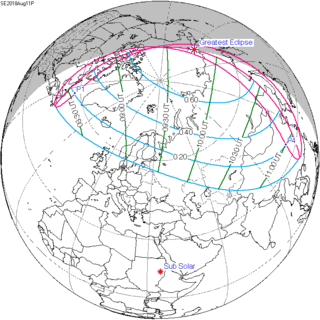 Map | |
| Type of eclipse | |
| Nature | Partial |
| Gamma | 1.1476 |
| Magnitude | 0.7368 |
| Maximum eclipse | |
| Coordinates | 70.4°N 174.5°E |
| Times (UTC) | |
| Greatest eclipse | 9:47:28 |
| References | |
| Saros | 155 (6 of 71) |
| Catalog # (SE5000) | 9549 |

Visibility
The maximal phase of the partial eclipse was recorded in East Siberian Sea, near the Wrangel Island.
The eclipse was observed in Canada, Greenland, Scotland, most of the Nordic countries (Iceland, Norway, Sweden, Finland), Estonia, Latvia, practically throughout Russia (except for places southwest of the line roughly passing through Pskov, Moscow and Penza, and the most eastern places of the Far East), in Kazakhstan, Kyrgyzstan, Mongolia and China. During the sunset, the eclipse was observed in North and South Korea.

Gallery
_(cropped).jpg) Moscow, Russia, 9:40 UTC
Moscow, Russia, 9:40 UTC.jpg) Baley, Russia, 10:24 UTC
Baley, Russia, 10:24 UTC
Related eclipses
Eclipses of 2018
Solar eclipses ascending node 2015-2018
Solar eclipses 2015–2018
This eclipse is a member of a semester series. An eclipse in a semester series of solar eclipses repeats approximately every 177 days and 4 hours (a semester) at alternating nodes of the Moon's orbit.[1]
| Solar eclipse series sets from 2015–2018 | ||||||
|---|---|---|---|---|---|---|
| Descending node | Ascending node | |||||
| Saros | Map | Gamma | Saros | Map | Gamma | |
120._(32844461616).jpg) Longyearbyen, Svalbard | 2015 March 20 Total |
0.9453 | 125 | 2015 September 13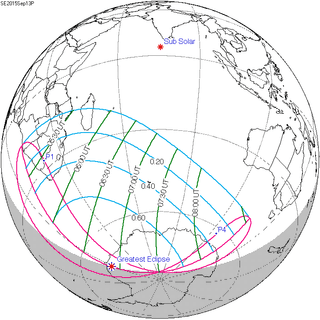 Partial |
-1.1004 | |
| 130 Balikpapan, Indonesia | 2016 March 9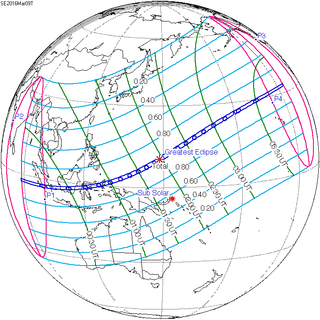 Total |
0.2609 | 135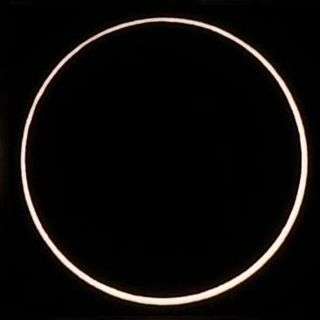 L'Étang-Salé, Réunion | 2016 September 1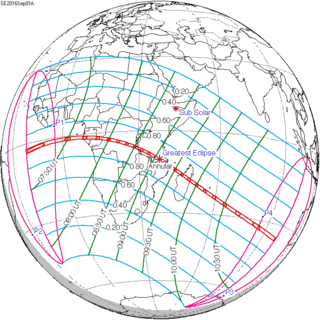 Annular |
-0.3330 | |
140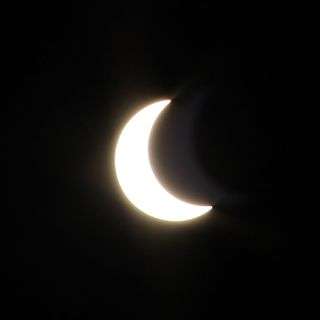 Partial from Buenos Aires | 2017 February 26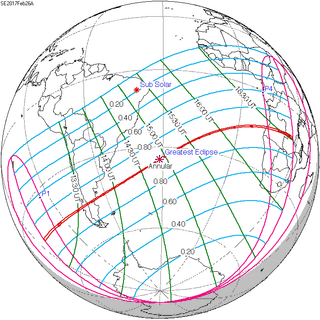 Annular |
-0.4578 | 145.jpg) Casper, Wyoming | 2017 August 21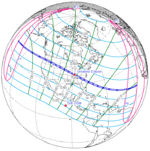 Total |
0.4367 | |
150.jpg) Partial from Olivos, Buenos Aires | 2018 February 15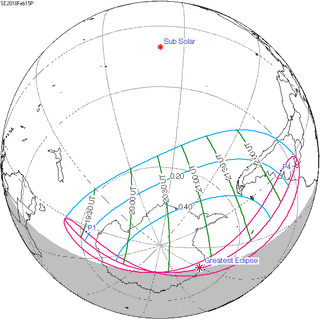 Partial |
-1.2117 | 155.jpg) Partial from Huittinen, Finland | 2018 August 11 Partial |
1.1476 | |
| Partial solar eclipses on July 13, 2018, and January 6, 2019, occur during the next semester series. | ||||||
Saros 155 series
It is a part of Saros cycle 155, repeating every 18 years, 11 days (223 synodic months), contains 71 events. The series started with a partial solar eclipse on June 17, 1928. It has total eclipses from September 12, 2072 to August 30, 2649. The series also has 3 hybrid eclipses from September 10, 2667 to October 3, 2703 and 20 annular eclipses from October 13, 2721 to May 8, 3064.
The series ends at member 71 as a partial eclipse on July 24, 3190. The longest total eclipses will be on October 26, 2144 and on November 7, 2162, at 4 minutes and 5 seconds.[2]
| Series members 1–10 occur between 1901 and 2100: | ||
|---|---|---|
| 1 | 2 | 3 |
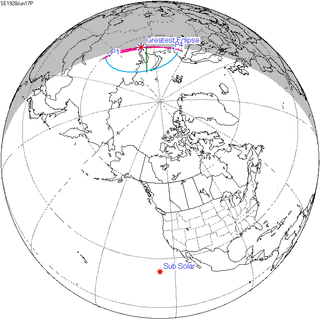 June 17, 1928 |
 June 29, 1946 |
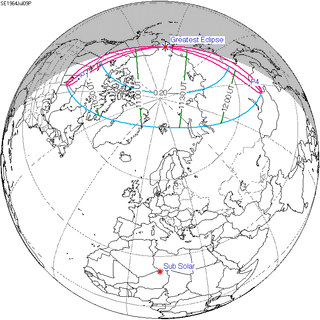 July 9, 1964 |
| 4 | 5 | 6 |
 July 20, 1982 |
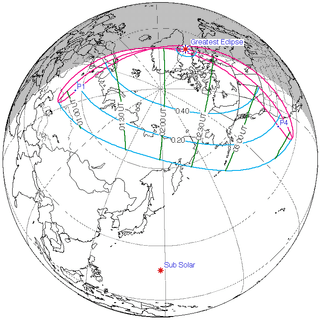 July 31, 2000 |
 August 11, 2018 |
| 7 | 8 | 9 |
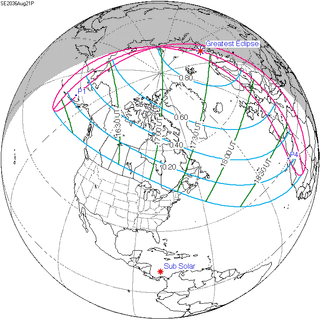 August 21, 2036 |
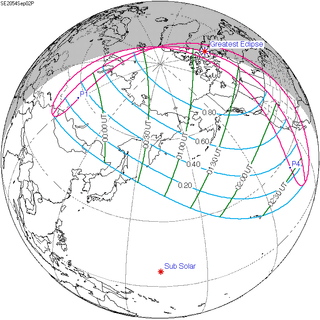 September 2, 2054 |
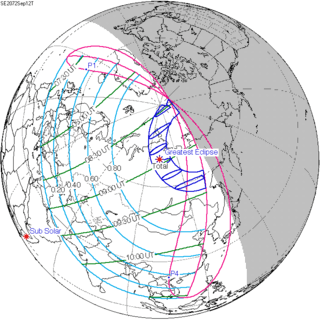 September 12, 2072 |
| 10 | ||
 September 23, 2090 | ||
Metonic series
The metonic series repeats eclipses every 19 years (6939.69 days), lasting about 5 cycles. Eclipses occur in nearly the same calendar date. In addition, the octon subseries repeats 1/5 of that or every 3.8 years (1387.94 days). All eclipses in this table occur at the Moon's ascending node.
| 22 eclipse events between January 5, 1935 and August 11, 2018 | ||||
|---|---|---|---|---|
| January 4-5 | October 23-24 | August 10-12 | May 30-31 | March 18-19 |
| 111 | 113 | 115 | 117 | 119 |
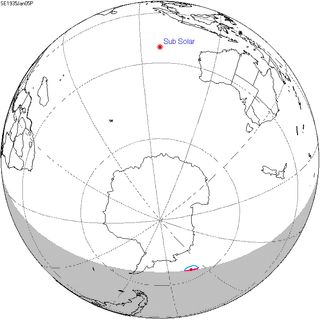 January 5, 1935 |
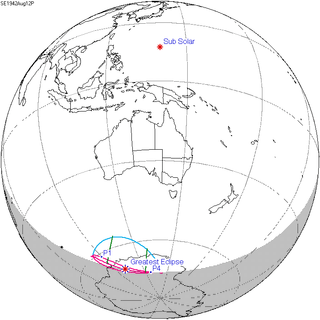 August 12, 1942 |
 May 30, 1946 |
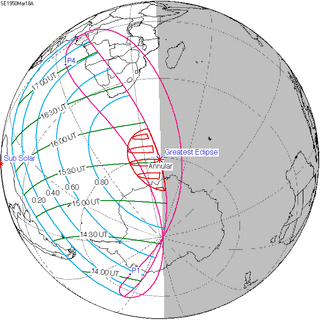 March 18, 1950 | |
| 121 | 123 | 125 | 127 | 129 |
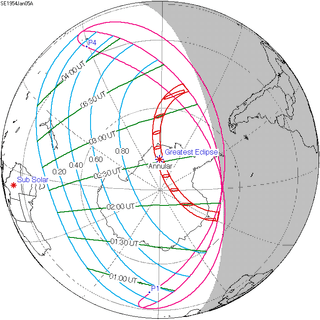 January 5, 1954 |
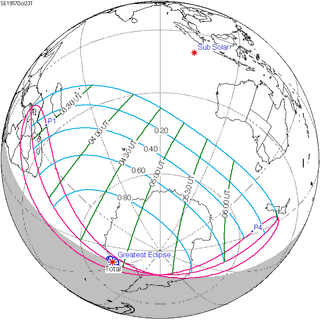 October 23, 1957 |
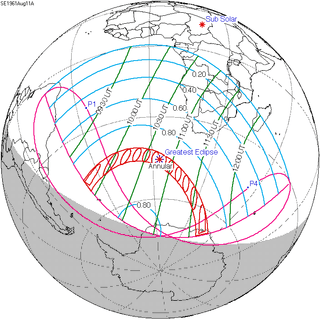 August 11, 1961 |
 May 30, 1965 |
 March 18, 1969 |
| 131 | 133 | 135 | 137 | 139 |
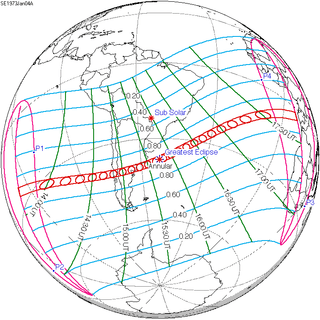 January 4, 1973 |
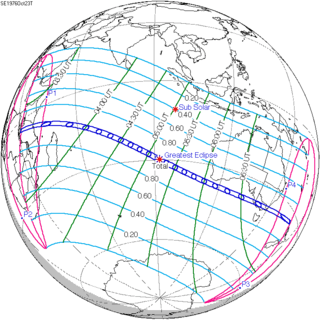 October 23, 1976 |
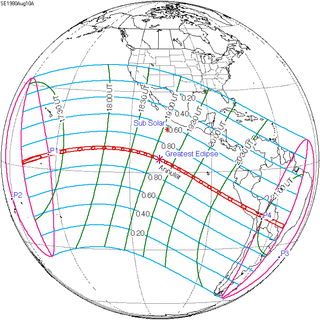 August 10, 1980 |
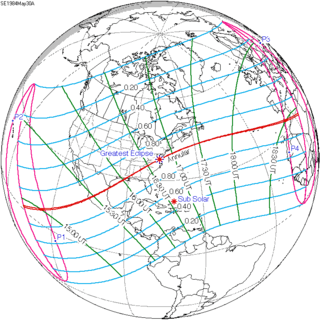 May 30, 1984 |
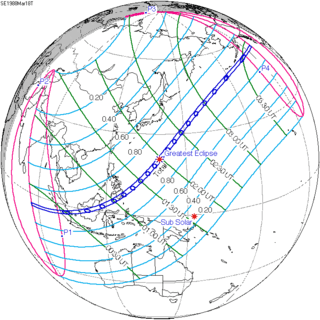 March 18, 1988 |
| 141 | 143 | 145 | 147 | 149 |
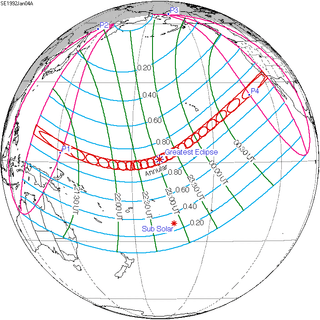 January 4, 1992 |
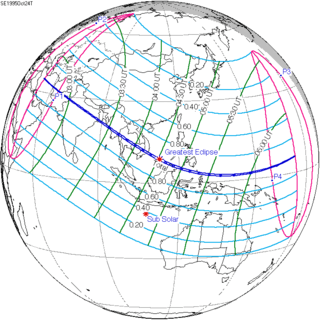 October 24, 1995 |
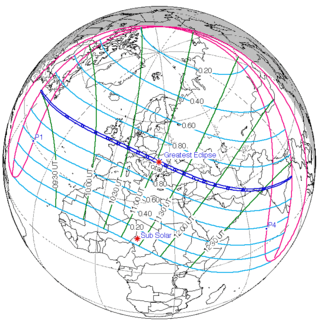 August 11, 1999 |
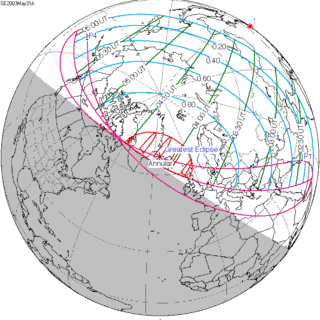 May 31, 2003 |
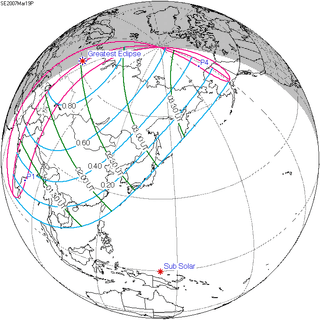 March 19, 2007 |
| 151 | 153 | 155 | 157 | 159 |
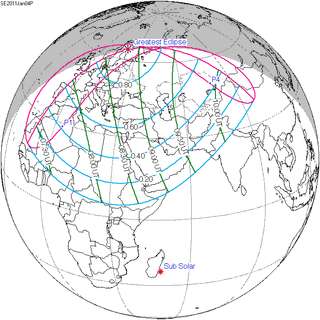 January 4, 2011 |
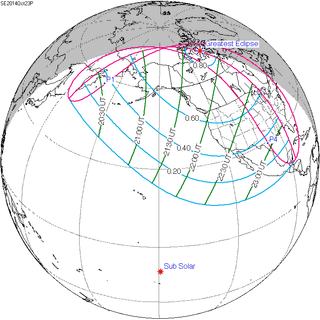 October 23, 2014 |
 August 11, 2018 |
||
External links
| Wikimedia Commons has media related to Solar eclipse of 2018 August 11. |
- Earth visibility chart and eclipse statistics Eclipse Predictions by Fred Espenak, NASA/GSFC
- Kudryashova, Natalia (August 14, 2018). "Солнечное затмение 11 августа 2018 года на фото: Каким видели Солнце в разных уголках Земли" [Solar eclipse of August 11, 2018: How the sun was seen in different parts of the Earth] (in Russian). Retrieved 2019-01-02.
- van Gent, R.H. "Solar- and Lunar-Eclipse Predictions from Antiquity to the Present". A Catalogue of Eclipse Cycles. Utrecht University. Retrieved 6 October 2018.
- Saros Series Catalog of Solar Eclipses NASA Eclipse Web Site.
